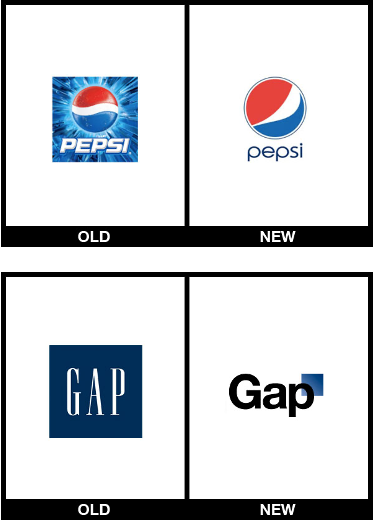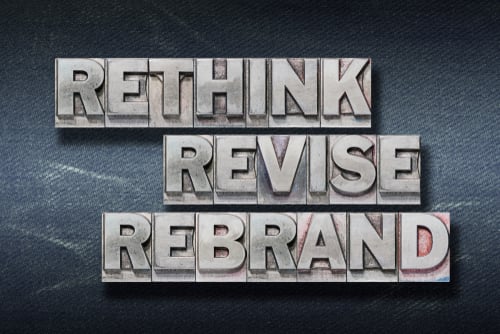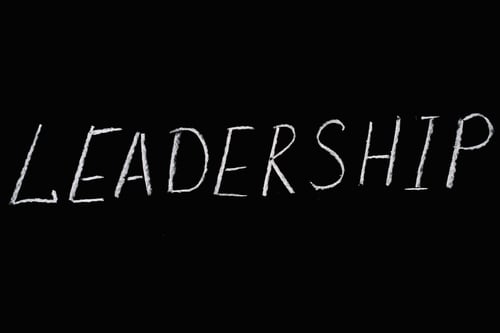
For many marketers, rebranding can feel daunting. It’s a labor-intense process that needs deep thought before you dive in. While a rebrand can feel like a fresh start, it’s not always needed or beneficial. Just because you don’t love your brand’s logo doesn’t mean you need to ditch everything.
It’s been well-publicized; a disastrous rebranding can hurt both your reputation and your bottom line. Remember Pepsi’s 2008 nonsensical rebrand that cost the company $1.2 billion over three years and a loss of market share? What about Gap’s 2010 rebrand that lasted just six days!

As the saying goes, “If it ain’t broke, don’t fix it.” But how do you know when the time is right?
7 Signs It’s Time to Rebrand
There are undoubtedly reasons to consider rebranding. However, no decision should be made without due diligence, including:
- Doing significant research
- Having serious discussions with leadership
- Crafting a solid execution plan (no one has time, money, and energy to waste on a haphazard execution).
Being outdated is the primary reason companies want to rebrand. If the look and feel of your brand are stale and your website is an embarrassment, a rebrand might be in your not-to-distant future.
This is not uncommon in industries that evolve quickly. For example, over the last 20 years, Google has had seven logos. The inclination to rebrand is understandable; however, an old logo and an outdated logo are not the same. If your brand is well-established, it's best to do solid audience research before tossing the old one out. The infamous Gap logo debacle created a backlash because the company tried to "modernize" when consumers felt far more connected to the brand's iconic logo.
2) You look like everyone else in your industrySavvy brands strive to keep up as industries change and evolve. However, sometimes brands start to adopt each other's traits subconsciously. There's no differentiation, no originality, or standing out from the "sea of sameness." For example, streaming video services Netflix and YouTube use a red, white, and black palette. Conversely, Twitch launched with an in-your-face purple palette, making a strong visual statement differentiating the brand.
Another reason brands can start to look alike is because they try to one-up each other through rebrands. Just because a competitor changed their logo doesn't mean you have to change yours. When rebranding is reactionary, it rarely feels authentic, unique, and original.
3) You’re targeting a new audienceMaybe your company is looking to attract a new group of people, but your brand is not connecting with them. Your brand should always speak to the people you're attempting to reach, so a rebrand may be the right decision.
However, you don't want to risk doing anything that alienates your existing customer base. Ideally, your rebrand is something that enhances your brand identity in a way that appeals to both current and new customers. For example, Coca-Cola's rebrand of Diet Coke aims to grab millennial attention through unique flavors and fresh, sleek, colorful cans.
4) Your brand has extendedRegardless of the industry, success evokes the inclination to expand. However, the identities of many brands don't reflect their current brand strategy or product/service offerings. If you haven't undergone a rebrand since your CEO's grandfather founded the company, you likely could use a rebrand that is modern, flexible, and enduring.
5) It doesn’t accurately reflect your valuesAs you know, people (especially millennials and Gen Z) want to align themselves with brands whose values they share. If you've crafted a solid brand strategy and articulated your purpose, vision, mission, and values, you should know what your core principles are. However, if your brand identity has evolved or wasn't correctly articulated when it was created, it may not accurately reflect your brand.
6) You’ve had bad pressAmid the Harvey Weinstein scandal, Tungsten Branding President Phil Davis told Ad Age, "Good branding can't cover up bad behavior." However, if you've been in hot water and have taken measured steps to make things right again and align your values to your practices, then a rebrand might help you move past it. For example, The Lance Armstrong Foundation rebranded as LIVESTRONG after its founder was involved in a dope scandal. The new name is so well-liked that its earlier iteration has been pretty much forgotten.
7) You’ve merged or acquiredWith new ownership or partnership comes new thinking, so branding makes sense. According to the 2017 Landor M&A Brand Study, 74% of all companies rebranded an acquired asset within the first seven years.
But rebranding of this type should be done carefully — and with common sense. For example, Verizon was a successful rebrand, born from the merger of Bell Atlantic and GTE. However, Yahoo was universally mocked when it was renamed Altaba, as was Tronc (formerly Tribune Publishing) for its clunky, pretentious, and ridiculous-sounding name.
Finally, remember: Don’t make the decision lightly.
If you need help, our brand strategy consultants have decades of rebranding experience, helping clients revive, refresh, and reinvigorate their brands.
Recent Posts
Posts by Topics
- Brand Strategy (57)
- Brand Strategy Consulting (28)
- Brand Differentiation (27)
- Customer Experience (24)
- Brand Positioning (22)
- Marketing Strategy (9)
- Brand Extension Strategy (8)
- Customer Behavior (8)
- Brand Architecture Strategy (7)
- Brand Extension (7)
- Brand Growth (7)
- Brand Portfolio & Architecture (7)
- Brand Purpose (7)
- Brand Value Proposition (7)
- Brand Engagement (6)
- Brand Portfolio Strategy (6)
- Brand Storytelling (6)
- Rebranding Strategy (6)
- Brand Awareness (5)
- Brand Image (5)
- Branding (5)
- Rebranding (5)
- Technology (5)
- B2B Brand Strategy (4)
- Brand Experience (4)
- Value Proposition (4)
- Brand Extendibility (3)
- Brand Metrics (3)
- Brand Repositioning (3)
- Corporate Branding (3)
- Differentiation Strategy (3)
- Measurement & Metrics (3)
- Brand Engagement Strategy (2)
- Brand Portfolio (2)
- Brand Promise (2)
- Brand Voice (2)
- Digital Marketing (2)
- Digital and Brand Experience (2)
- Employee Brand Engagement (2)
- Brand Architecture (1)
- Brand Development (1)
- Brand Equity (1)
- Brand Identity (1)
- Brand Measurement (1)
- Brand Name (1)
- Brand Strategy Consultants (1)
- Brand Strategy Firms (1)
- Digital Strategy (1)
- Internal Branding (1)
- Messaging (1)


